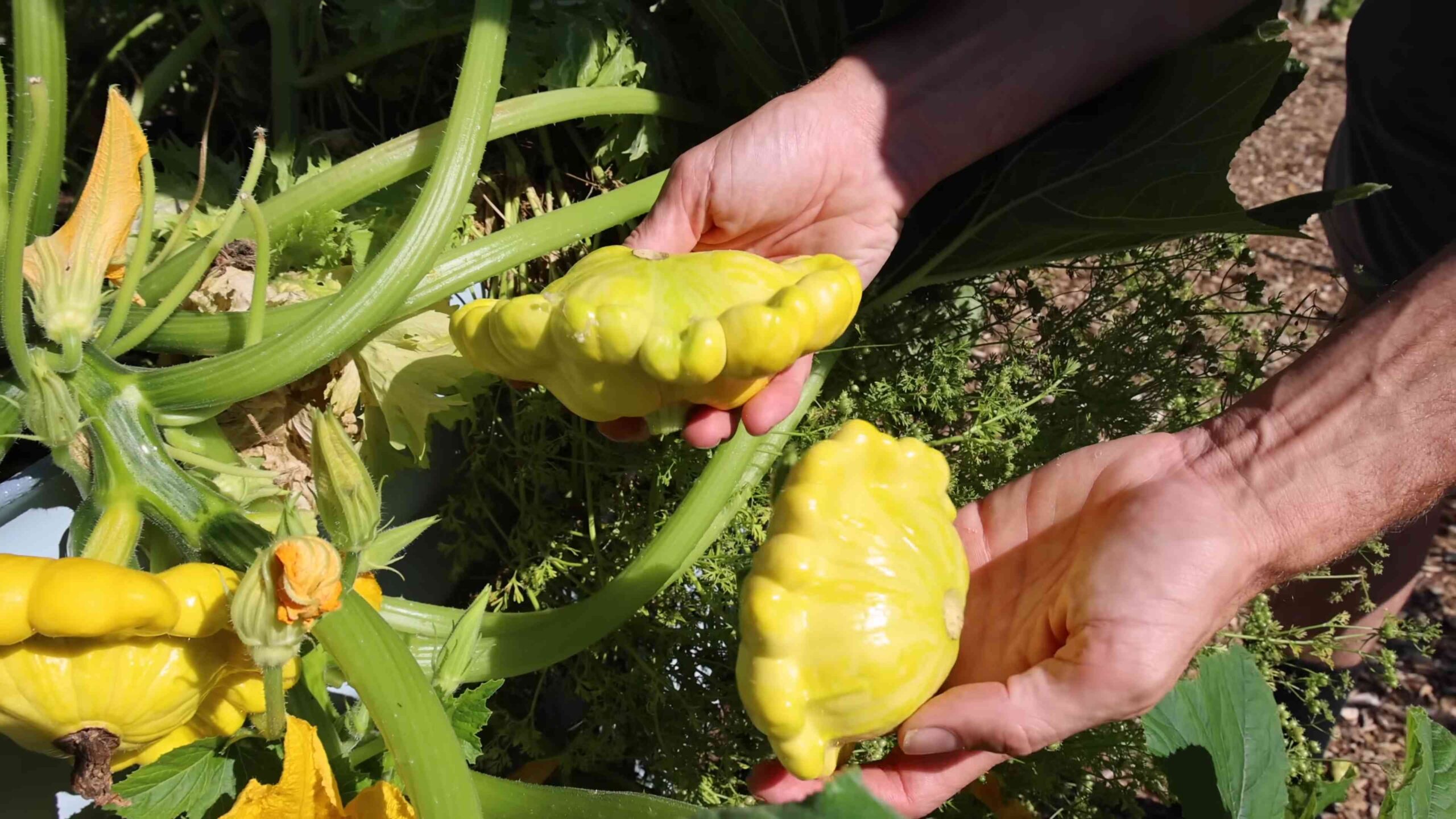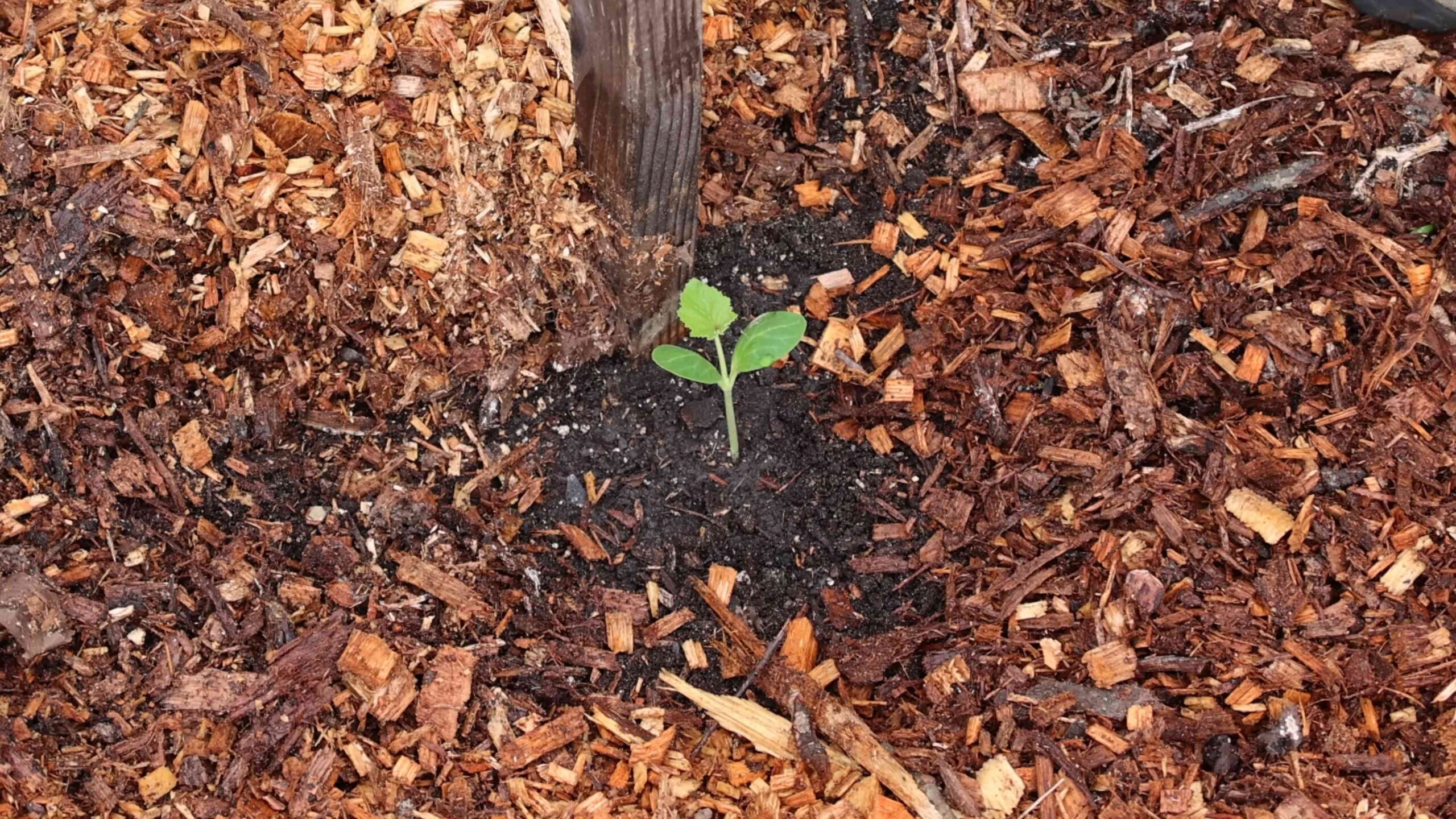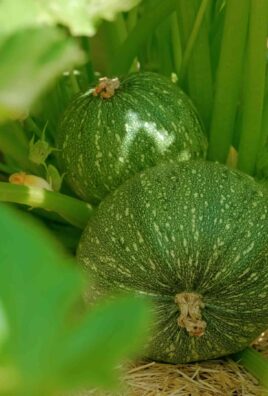Growing Squash Vertically: Unlock the secrets to a bountiful harvest, even in the smallest of spaces! Are you dreaming of vine-ripened squash but think you lack the sprawling garden needed? Fear not, fellow gardening enthusiast! This DIY guide is your ticket to transforming your patio, balcony, or tiny backyard into a squash-growing paradise.
For centuries, gardeners have sought innovative ways to maximize their yields. From ancient terraced gardens to modern-day urban farms, the desire to cultivate more in less space has always driven ingenuity. While traditional squash cultivation often demands ample ground, the beauty of vertical gardening lies in its ability to defy these limitations. It’s a technique that echoes the resourcefulness of generations past, adapted for the modern gardener.
Why should you embrace the art of growing squash vertically? Well, besides saving precious space, this method offers a host of benefits. It improves air circulation around the plants, reducing the risk of fungal diseases. It also makes harvesting a breeze, saving your back from unnecessary strain. Plus, let’s be honest, a wall adorned with vibrant squash vines is a stunning visual treat! I’m excited to share my favorite DIY tricks and hacks that will help you achieve a thriving vertical squash garden. Let’s get started!

Growing Squash Vertically: A DIY Guide to Maximize Your Harvest
Hey there, fellow gardeners! Are you dreaming of a bountiful squash harvest but short on space? Well, I’ve got a fantastic solution for you: vertical squash gardening! It’s a game-changer, trust me. Not only does it save precious garden real estate, but it also improves air circulation, reduces pest problems, and makes harvesting a breeze. I’m going to walk you through everything you need to know to build your own vertical squash support system and grow delicious squash upwards. Let’s get started!
Choosing the Right Squash Variety
Before we dive into the construction phase, it’s crucial to pick the right squash variety. Not all squash are created equal when it comes to vertical gardening. You’ll want to opt for bush or semi-bush varieties, as they tend to be more compact and manageable. Here are a few of my favorites:
* Zucchini: These are prolific producers and relatively easy to train vertically. Black Beauty and Costata Romanesco are excellent choices.
* Yellow Squash: Similar to zucchini, yellow squash varieties like Early Crookneck are well-suited for vertical growing.
* Patty Pan Squash: These cute, saucer-shaped squash are also a good option, especially the smaller varieties.
* Delicata Squash: While technically a winter squash, Delicata is relatively small and can be grown vertically with proper support.
* Smaller Butternut Squash: Some of the smaller butternut varieties can be trained, but be prepared to provide extra support as the fruits develop.
Avoid large vining varieties like pumpkins or spaghetti squash, as they can become too heavy and unwieldy for a vertical structure.
Building Your Vertical Squash Support System
Okay, now for the fun part! There are several ways to create a vertical support system for your squash. I’m going to share my favorite method, which involves using a sturdy trellis and some clever netting.
Materials You’ll Need:
* A sturdy trellis: This could be a wooden trellis, a metal arch, or even a repurposed gate. Make sure it’s tall enough to accommodate the mature size of your chosen squash variety (at least 6 feet).
* Heavy-duty netting: I prefer using nylon netting with a 4-6 inch mesh size. This will provide ample support for the growing vines and developing fruits.
* Zip ties or garden twine: For attaching the netting to the trellis.
* Stakes or anchors: To secure the trellis to the ground and prevent it from tipping over.
* Gardening gloves: To protect your hands.
* Measuring tape: To ensure accurate measurements.
* Scissors or wire cutters: For cutting the netting and zip ties.
Step-by-Step Instructions:
1. Prepare the Trellis: First, choose a sunny location in your garden with well-draining soil. Position your trellis in the desired spot and secure it firmly to the ground using stakes or anchors. Make sure it’s stable and won’t wobble, especially when loaded with heavy squash. I like to use metal stakes hammered deep into the ground for extra security.
2. Attach the Netting: Now, it’s time to attach the netting to the trellis. Start at the bottom and work your way up, securing the netting to the trellis frame using zip ties or garden twine. Make sure the netting is taut and evenly distributed. You want to create a strong and supportive structure for your squash vines to climb. I usually space the zip ties about every 6-8 inches for maximum support.
3. Reinforce the Netting (Optional): For extra support, especially if you’re growing a heavier squash variety, you can reinforce the netting by adding horizontal or vertical support lines using garden twine. Simply weave the twine through the netting and tie it securely to the trellis frame. This will help distribute the weight of the squash and prevent the netting from sagging.
4. Prepare the Soil: Before planting your squash seedlings, amend the soil around the base of the trellis with compost or well-rotted manure. Squash are heavy feeders and need nutrient-rich soil to thrive. I also like to add a slow-release fertilizer to give them an extra boost.
Planting and Training Your Squash
Alright, the support system is ready, and the soil is prepped. Now it’s time to get those squash seedlings in the ground!
Step-by-Step Instructions:
1. Planting the Seedlings: Plant your squash seedlings at the base of the trellis, spacing them about 12-18 inches apart. Dig a hole slightly larger than the root ball, gently remove the seedling from its container, and place it in the hole. Backfill with soil and water thoroughly.
2. Training the Vines: As the squash vines begin to grow, gently guide them towards the trellis and weave them through the netting. You can use garden twine to tie the vines to the netting if needed. The key is to encourage the vines to climb upwards and spread out evenly across the trellis. I usually check on them every few days and gently redirect any stray vines.
3. Pruning (Optional): To encourage bushier growth and better fruit production, you can prune the squash vines by pinching off the tips of the main stems. This will encourage the plant to produce more side shoots, which will bear more flowers and fruits. I usually wait until the vines are about 2-3 feet long before pruning.
Providing Ongoing Care
Growing squash vertically requires a bit more attention than growing them on the ground. Here’s what you need to do to keep your plants happy and healthy:
Watering:
Squash need consistent moisture, especially during hot weather. Water deeply at the base of the plants, avoiding wetting the foliage, which can lead to fungal diseases. I usually water them every 2-3 days, or more often if the soil feels dry to the touch.
Fertilizing:
Feed your squash plants regularly with a balanced fertilizer or compost tea. This will provide them with the nutrients they need to produce abundant fruits. I like to fertilize them every 2-3 weeks.
Pest Control:
Keep an eye out for common squash pests like squash bugs, squash vine borers, and aphids. Inspect your plants regularly and take action immediately if you spot any signs of infestation. You can use organic pest control methods like insecticidal soap or neem oil to control these pests. I also like to handpick any squash bugs or squash vine borer eggs that I find.
Supporting the Fruits:
As the squash fruits develop, they can become quite heavy and may need extra support. You can create slings using netting or fabric scraps to support the fruits and prevent them from breaking off the vine. Simply tie the sling to the trellis and cradle the fruit inside. I’ve found this to be especially helpful for larger squash varieties.
Harvesting Your Vertical Squash
Finally, the moment you’ve been waiting for: harvesting your delicious, homegrown squash!
Harvesting Tips:
* Harvest zucchini and yellow squash when they are young and tender, typically around 6-8 inches long.
* Patty pan squash can be harvested when they are about 3-4 inches in diameter.
* Delicata squash should be harvested when the skin is firm and the color is a deep cream with green stripes.
* Butternut squash should be harvested when the skin is hard and the color is a deep tan.
Use a sharp knife or pruners to cut the squash from the vine, leaving a short stem attached. Enjoy your fresh, homegrown squash in your favorite recipes!
Troubleshooting Common Problems
Even with the best care, you might encounter some challenges when growing squash vertically. Here are a few common problems and how to address them:
* Powdery Mildew: This fungal disease can cause a white, powdery coating on the leaves. Improve air circulation by pruning the plants and avoid wetting the foliage when watering. You can also treat powdery mildew with a fungicide.
* Squash Vine Borers: These pests can tunnel into the stems of squash plants and cause them to wilt and die. Prevent squash vine borers by wrapping the base of the stems with aluminum foil or netting. You can also inject Bacillus thuringiensis (Bt) into the stems to kill the borers.
* Lack of Pollination: Squash plants need to be pollinated in order to produce fruits. If you’re not seeing any fruits developing, you may need to hand-pollinate the flowers. Simply transfer pollen from the male flowers to the female flowers using a small brush.
Growing squash vertically is a rewarding and space-saving way to enjoy a bountiful harvest. With a little planning and effort, you can create a beautiful and productive vertical garden that will impress your neighbors and delight your taste buds. Happy gardening!

Conclusion
So, there you have it! Growing squash vertically isn’t just a trendy gardening technique; it’s a game-changer for maximizing your yield, minimizing garden pests, and adding a touch of architectural beauty to your outdoor space. We’ve explored the benefits, the methods, and the essential considerations for successfully training your squash vines to climb.
Why is this a must-try? Because it addresses some of the most common challenges faced by squash growers. No more sprawling vines taking over your entire garden! No more struggling to find hidden fruits rotting on the ground! Vertical gardening elevates your squash, literally and figuratively, providing better air circulation, increased sunlight exposure, and easier harvesting.
But the beauty of this method lies in its adaptability. Feel free to experiment with different trellis designs. A simple A-frame trellis constructed from repurposed wood can be just as effective as a more elaborate metal structure. Consider using cattle panels for a robust and long-lasting support system. For smaller gardens or balconies, container gardening with a sturdy tomato cage can be a perfect solution for growing bush varieties vertically.
Think about the type of squash you’re growing. While vining varieties like butternut, spaghetti, and delicata are natural climbers, even bush varieties can benefit from some support, especially when laden with fruit. For heavier fruits, consider providing extra support with slings made from old t-shirts or pantyhose to prevent the vines from breaking.
Don’t be afraid to get creative with your vertical gardening setup. You can even incorporate companion plants at the base of your squash vines to attract pollinators and deter pests. Marigolds, nasturtiums, and basil are excellent choices.
Ultimately, the success of growing squash vertically depends on your willingness to experiment and adapt to your specific growing conditions. Pay attention to your plants, observe their growth patterns, and adjust your support system as needed.
We are confident that once you experience the advantages of vertical squash growing, you’ll never go back to the traditional method. The increased yield, reduced pest problems, and space-saving benefits are simply too good to ignore.
So, grab your seeds, build your trellis, and get ready to embark on a rewarding gardening adventure. We encourage you to try this DIY trick and share your experiences with us! Post pictures of your vertical squash gardens on social media using #VerticalSquashSuccess and let us know what worked best for you. We’re eager to learn from your successes and challenges. Happy growing!
Frequently Asked Questions (FAQ)
What types of squash are best suited for vertical growing?
The best types of squash for vertical growing are vining varieties like butternut, spaghetti, delicata, acorn, and some types of pumpkins. These varieties naturally produce long vines that can be trained to climb a trellis or other support structure. However, even bush varieties can benefit from some support, especially as the fruits develop and become heavy. For bush varieties, consider using a sturdy tomato cage or a smaller trellis to provide support and prevent the plants from sprawling. When selecting your squash variety, consider the size and weight of the mature fruit. Larger, heavier fruits may require a more robust support system.
How do I train my squash vines to climb a trellis?
Training squash vines to climb a trellis is a relatively simple process. As the vines grow, gently guide them towards the trellis and use soft plant ties or twine to secure them to the support structure. Be careful not to tie the vines too tightly, as this can restrict their growth. Regularly check the ties and adjust them as needed to accommodate the growing vines. Encourage lateral growth by pinching off the tips of the vines. This will promote branching and increase fruit production. As the fruits develop, you may need to provide additional support with slings made from old t-shirts or pantyhose to prevent the vines from breaking under the weight of the squash.
What kind of trellis should I use for growing squash vertically?
The type of trellis you use for growing squash vertically depends on the size and weight of the squash variety you’re growing, as well as your personal preferences and available space. Some popular options include:
* **A-frame trellis:** This is a simple and sturdy option that can be easily constructed from wood or bamboo.
* **Cattle panel trellis:** Cattle panels are strong and durable, making them ideal for supporting heavy squash varieties.
* **Tomato cages:** These are a good option for smaller gardens or balconies, and can be used to support bush varieties of squash.
* **Netting:** Netting can be strung between posts or attached to a frame to create a climbing surface for squash vines.
When choosing a trellis, make sure it is tall enough to accommodate the mature size of the squash vines and strong enough to support the weight of the fruits.
How much sunlight do squash plants need when grown vertically?
Squash plants need at least 6-8 hours of direct sunlight per day to thrive. When growing squash vertically, make sure the trellis is positioned in a location that receives ample sunlight. If you are growing squash in a container, you may need to move the container throughout the day to ensure that the plants receive enough sunlight. Insufficient sunlight can lead to stunted growth, reduced fruit production, and increased susceptibility to pests and diseases.
What are some common pests and diseases that affect squash plants grown vertically, and how can I prevent them?
Some common pests and diseases that affect squash plants include squash vine borers, squash bugs, powdery mildew, and squash mosaic virus. To prevent these problems, consider the following:
* **Squash vine borers:** Wrap the base of the squash stems with aluminum foil or netting to prevent the borers from laying their eggs. You can also inject Bacillus thuringiensis (Bt) into the stems to kill the borers.
* **Squash bugs:** Handpick squash bugs and their eggs from the plants regularly. You can also use insecticidal soap to control infestations.
* **Powdery mildew:** Ensure good air circulation around the plants and avoid overhead watering. You can also apply a fungicide to prevent or treat powdery mildew.
* **Squash mosaic virus:** Use disease-free seeds and control aphids, which can transmit the virus. Remove and destroy any infected plants.
Growing squash vertically can help improve air circulation and reduce the risk of fungal diseases. Companion planting with marigolds, nasturtiums, and basil can also help deter pests.
How often should I water squash plants grown vertically?
Squash plants need consistent moisture, especially during hot weather. Water deeply and regularly, aiming for about 1-2 inches of water per week. Check the soil moisture regularly and water when the top inch of soil feels dry. Avoid overhead watering, as this can promote fungal diseases. When growing squash in containers, you may need to water more frequently, as containers tend to dry out faster than garden beds.
Do I need to fertilize squash plants grown vertically?
Yes, squash plants are heavy feeders and benefit from regular fertilization. Use a balanced fertilizer with a ratio of 10-10-10 or 5-10-5. Apply fertilizer at planting time and then every 2-3 weeks throughout the growing season. You can also amend the soil with compost or well-rotted manure to provide additional nutrients. When growing squash in containers, use a liquid fertilizer diluted to half strength.
How do I know when my squash is ready to harvest?
The time it takes for squash to mature depends on the variety. Generally, summer squash is ready to harvest when it is young and tender, while winter squash is ready when the skin is hard and the stem is dry. Check the seed packet or plant tag for specific harvesting instructions. For winter squash, leave a few inches of stem attached to the fruit when harvesting. This will help prolong its storage life.
Can I grow squash vertically in containers?
Yes, you can grow squash vertically in containers, but you will need to choose a large container (at least 20 gallons) and use a sturdy trellis or support structure. Bush varieties of squash are generally better suited for container gardening than vining varieties. Make sure the container has good drainage and use a high-quality potting mix. Water and fertilize regularly, as container-grown plants tend to dry out and deplete nutrients more quickly than plants grown in the ground.





Leave a Comment